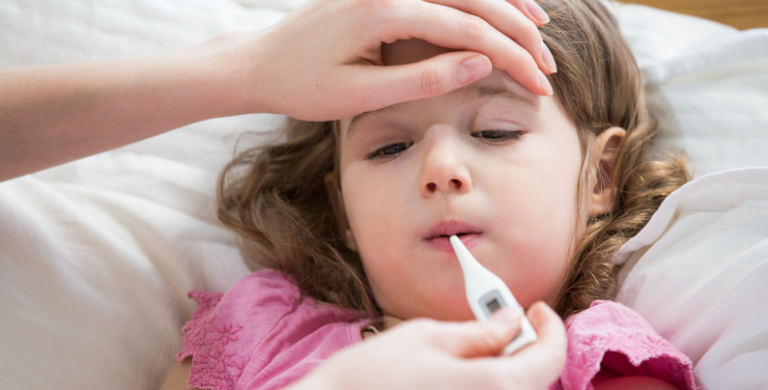Imagine this: Cosying up in your favourite blanket, sipping hot tea, and binge-watching your comfort TV show. Sounds idyllic, right? Well, that tranquillity gets rudely interrupted by an unwelcome guest—the flu.
Ah, the flu—a yearly reminder that even the toughest of us need to take it slow sometimes. Sometimes, the best remedy is simply allowing ourselves to recharge.
So, grab your tissues and thermometer, and let’s navigate the highs and lows of battling the flu together.
What is Parainfluenza?
Parainfluenza is a common respiratory illness caused by a group of viruses known as parainfluenza viruses. These viruses belong to the paramyxovirus family and frequently cause respiratory infections, particularly in children. There are several types of parainfluenza viruses, with types 1, 2, and 3 being the most common.
Parainfluenza is also known as human parainfluenza viruses – HPIVs.
Causes of Parainfluenza
Parainfluenza viruses are highly contagious and are typically spread through respiratory droplets when an infected person coughs or sneezes. The viruses can also survive briefly on surfaces, allowing for indirect transmission through contact with contaminated objects.
Symptoms of Parainfluenza
The symptoms of parainfluenza are similar to those of the common cold and typically develop within a few days of exposure to the virus.
HPIV-1 and HPIV-2 generally cause croup and symptoms similar to the common cold, while HPIV-3 and HPIV-4 often cause pneumonia and bronchiolitis.
Common symptoms include:
- Fever: A low-grade fever is often present, especially in children.
- Cough: A persistent cough, which may be dry or produce mucus, is a hallmark symptom of parainfluenza.
- Runny Nose: Nasal congestion and discharge are common, leading to a stuffy or runny nose.
- Sore Throat: Irritation or a sore throat may occur, accompanied by difficulty swallowing.
- Hoarseness: Changes in voice quality, such as hoarseness or raspiness, can occur due to inflammation of the vocal cords.
- Croup: In some cases, particularly in young children, parainfluenza can cause croup, characterised by a barking cough and noisy breathing.
Read next: Have you got your flu shots?
Treatment for Parainfluenza
- Rest: Getting plenty of rest allows the body to fight off the infection more effectively.
- Hydration: Drinking fluids helps prevent dehydration and loosens mucus, making it easier to clear from the respiratory tract.
- Over-the-Counter Medications: Pain relievers can help reduce fever and alleviate discomfort. Additionally, cough suppressants or expectorants may provide relief from coughing.
- Humidifiers: A humidifier or steamy shower can help ease congestion and soothe the throat.
- Antiviral Medications: In severe cases or for individuals at high risk of complications, antiviral medications may be prescribed to reduce the severity and duration of symptoms.
It’s essential to consult a healthcare professional if symptoms worsen or if there are concerns about complications such as pneumonia or difficulty breathing, especially in young children or individuals with underlying health conditions. Additionally, practising good hygiene, such as frequent handwashing and covering coughs and sneezes, can help prevent the spread of parainfluenza and other respiratory infections.
How To Prevent Parainfluenza
- Frequent Handwashing: Regularly wash your hands to minimise the risk of infection.
- Surface Disinfection: Keep surfaces that can harbour viruses clean and disinfected.
- Avoid Touching Your Face: To prevent viral entry points, avoid touching your eyes, mouth, or nose.
- Limit Close Contact: Steer clear of close contact with individuals exhibiting symptoms of viral infections.
- Stay Home When Sick: If you’re unwell, staying home can prevent spreading the virus to others.
SOURCES












